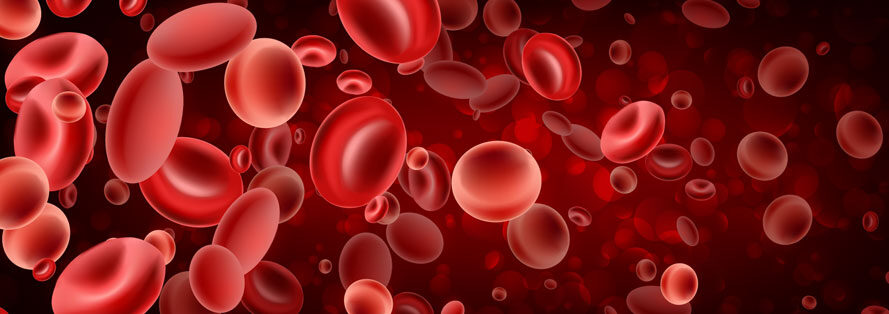Hemophilia Care & Price Monitoring Wave #27

SURVEY ON HEMOPHILIA CARE & PRICE MONITORING
UNITED STATES — WAVE 27
(May 2020)
Since 1993, the Marketing Research Bureau has tracked the US hemophilia care market, focusing on the most important clinical as well as socio-economic issues including product’s switching and adoption of new therapies, product’s differentiation, prophylaxis and immune tolerance, treatment preferences, pricing, reimbursement trends and more,
The FDA approval of Roche’s Hemlibra in October 2018 for hemophilia A prophylactic treatment has opened a new era in hemophilia care, with rapid uptake in patients with inhibitors and regular prophylaxis. Approved eleven months earlier for the treatment of patients with an inhibitor, Hemlibra already made a significant impact on this patient population sub-group, recording a rapid market acceptance. With a number of extended half-life recombinant factor VIII now on the market, the variety of new therapeutic options available to hemophilia patients, as well as for persons with von Willebrand disease has already changed the therapeutic landscape. For the clotting factor manufacturers, the wide choice offered to patients and treating personnel represents a new challenge as it becomes increasingly difficult to maintain differentiation in a crowded market, with pressure on prices.
Based on over twenty in-depth telephone interviews with hemophilia treatment centers and other stakeholders, this report provides clients with a detailed description of the US hemophilia care market in early 2019 and how it has evolved over the past decade. Some of the report’s focuses include:
- Analysis of coagulation factor brands, including the adoption and perception of new recombinant factors VIII and IX, as well as of Roche/Genentech’s Hemlibra;
- Market shares of coagulation factor products;
- Trends in immune tolerance and prophylaxis;
- Awareness of new products and technologies in development, including gene therapy;
- Impact of the 340 B program and patients’ issues and
- Coagulation factor prices.
Survey on Hemophilia Care & Price Monitoring United States — Wave #27
EXECUTIVE SUMMARY
1) INTRODUCTION
2) PATIENT POPULATION
2.1) Hemophilia
2.2) von Willebrand Disease
3) FACTOR VIII
3.1) Recombinant Factor VIII Products
3.2) Plasma-derived Factor VIII Products
4) FACTOR IX
4.1) Recombinant Factor IX Products
4.2) Plasma-derived Factor IX Products
5) VON WILLEBRAND DISEASE AND RARE BLEEDING DISORDERS
5.1) von Willebrand Disease
5.2) Rare Bleeding Disorders
6) PROPHYLAXIS
6.1) Background on Prophylaxis use
6.2) Which Factor VIII products are considered EHL products?
6.3) Number of Patients on Prophylaxis for Hemophilia A
6.3.1) Patient Prophylaxis Share
6.3.2) Percent of patients on Prophylaxis by Product
6.3.3) Hemlibra for Prophylaxis
6.4) Number of Patients on Prophylaxis for Hemophilia B
6.5) Dosing Regimen and Individualized Treatment
6.5.1) Weekly Dosage on Prophylaxis
6.5.2) Minimum Trough Level
6.6) Quantity of factor VIII and IX used for prophylaxis
7) INHIBITOR MANAGEMENT
7.1) Background on Inhibitor Management
7.1.1 SIPPET Study Results
7.2) Inhibitor Survey Results
7.2.1) Rate of Inhibitor Formation and Total Patients with Inhibitors 59
7.2.2) Treatment for Patients with Inhibitors
7.2.2.1) Hemlibra
7.2.2.2) Immune Tolerance Induction (ITI)
7.2.2.3) Bypassing Agents
7.2.3) Factor VIII Used to Treat ITI Patients
8) PATIENT ISSUES AND PRODUCT PREFERENCES
8.1) Hemlibra Switching Analysis
8.1.1) Patient Survey on Interest in Hemlibra
8.1.2) Concerns about Hemlibra and Suggestions
8.2) EHL Switching Analysis
8.2.1) Patients not switching to EHL products
8.2.2) Idelvion vs. Alprolix and Rebinyn
8.3) Hospitals Formularies
8.4) Insurance Coverage and its Impact on Brand Choice
8.4.1) Type of Insurance and Patient Coverage
8.4.2) Private Insurance influence on brand
9) SPECIALTY PHARMACIES & 340 B PROGRAM
9.1) Background on the 340 B Program
9.2) 340 B Survey Results
10) PRICES
10.1) Government Hospital/340B Program Acquisition Prices
10.2) Other Hospital/Home Care Acquisition Prices
10.3) CMS Reimbursement Prices
11) NEW PRODUCT DEVELOPMENTS
11.1) Number of Patient in Clinical Trials with Investigative Products
11.2) Novel Products and Respondents’ Opinion
11.2.1) Alnylam’s fitusiran
11.2.2) Roche/Genentech’s Hemlibra (emicizumab)
11.3) Gene Therapy
11.3.1) Background on Gene Therapy
11.3.2) Current Gene Therapy Trials
12) MARKET PROSPECTS FOR NEXT YEAR
13) METHODOLOGY
14) SUMMARY OF THE SURVEY RESULTS
15) INTERVIEW NOTES